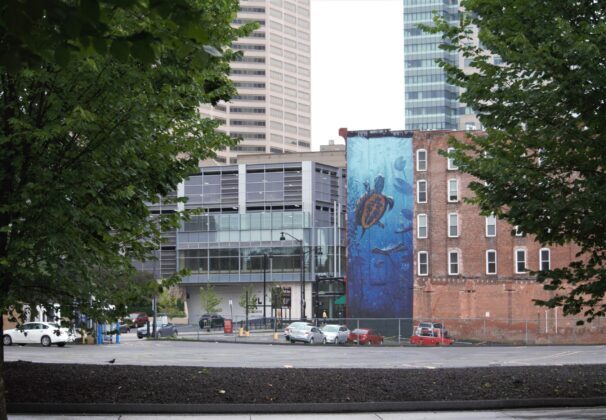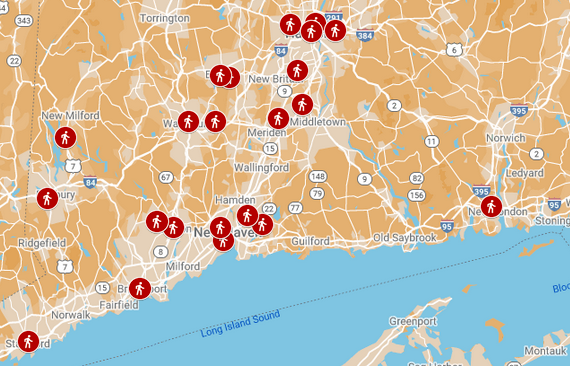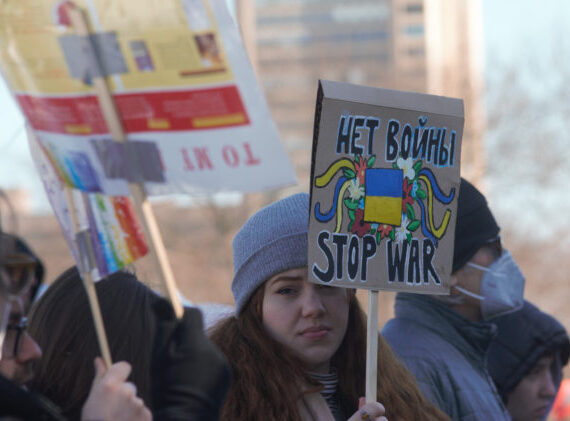“The transition we need in order to guarantee this safe future will not appear out of nowhere. It will come from a change in public opinion, and that change has to be created by us, using whatever effective means we can come up with. It will be driven by how we choose to communicate this story. There won’t be a one-size-fits-all message that will work for everyone.” -Greta Thunberg,
“This is the Biggest Story in the World,”
from The Climate Book
A few months ago I asked people what they would rather see some of our excess surface parking lots in Hartford used for, and the responses I got ranged from the vanilla and predictable to the more informed by local need to the kind of creative answer you expect from someone who knows people want to thrive, not merely survive.
The exercise was meant to kickstart people’s imaginations, their willingness to be curious and expand their thinking about what a place is, has, looks like, feels like, smells like. It was an intentional shift away toward possibility thinking. The first rule of improv is to be agreeable, to say “yes, and. . . ,” which to a hardened, closed off cynic may feel like a person floating around without their own opinions, but it’s not that. The “and” is the space where thoughts can be built on, complicated, and even, eventually, overturned. Yes, I hear you and I am considering what you are saying, and let’s see what else we can do with this scenario. For instance, the conversation could have been: Yes, a minor league stadium in downtown Hartford sounds great and lets give all Hartford residents one free ticket every season, and how about that space is used for concerts, regular movie nights, and about eighty other things on my list when the team is not using the space, and also could there be free yoga classes on the field, and here’s an idea for how the construction could be funded and it involves private bank accounts.
Possibility thinking applies to lots of real life scenarios. I mean, we don’t say “Yes, and” to fascists and nazis. When someone does not respect your life, there’s no conversation to have with them.
But, most of our daily interactions are, thankfully, not with people who want us dead. At most, they’re ambivalent. Perhaps that doesn’t seem much better. Nevermind.
The point here is that we can entertain many ideas for what we want our cities, our lives, our planet to look like and many ideas for how to begin accomplishing that.
The photo at the top of this post was taken yesterday, early morning. It’s a bittersweet view. There’s a lovely mural by Tao LaBossiere — one that I quite like because it doesn’t center humans, and it especially does not do that amid a thoroughly manufactured landscape. Then, the bitter: that whole row of parking spaces right next to the mural could be converted to rain gardens, with a few benches or picnic tables nearby. Why detract from a mural by parking right up against it? Half that lot could be renovated to include trees. There are endless possibilities, and none need to include rows and rows of parking. There’s a lot directly across the street. There’s too much parking everywhere in downtown. It sucks the life right out.
I’ll ask again, rhetorically, what else could this space be?
How else could we live our lives?
Is the purpose to amass wealth and spend our minutes driving around in search of the most convenient parking? Or could we be alive for other reasons?
The transition that Greta Thunberg refers to in the quote at the top of this post is the one that humans need to make if we want any quality of life for ourselves, our collective children, for those generations down the line. People don’t change habits unless (a) they’re forced to, or (b) they want to. The goal of legislation is often to steer humans toward taking steps they would have avoided otherwise. Public opinion is involved there. And, public opinion is expressed through collective voluntary actions taken by those who want to.
For some, the concept of mitigating climate change is too vast, so they shut down and do nothing. I don’t have much patience for that, but I will offer the parking lot analogy (which is also a real problem) anyway. Some parking lot owners will be lousy community members as they hoard land and allow conditions that contribute to runoff and flash flooding until they are incentivized by law (and through enforcement of such laws) to mend their ways or until the public tells them to do better, and that looks like people only driving to and parking in downtown when that is their only option. It looks like venues providing public transportation information proactively. It’s people asking for more than what we have been given for the last few generations, and I don’t mean more in terms of things but more quality of life. That doesn’t look like fossil fuel industries. It looks, sounds, feels, and smells quite different.
Climate Possibilities is a new series about climate mitigation, along with resilience, resistance, and restoration. It’s about human habitat preservation. It’s about loving nature and planet Earth, and demanding the kind of change that gives future generations the opportunity for vibrant lives. Doomers will be eaten alive, figuratively. All photographs are taken in Hartford, Connecticut unless stated otherwise.



Juanita Lancaster
Yes a green space trees, grass benches some type of water element an open green space for people to enjoy